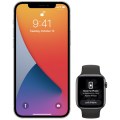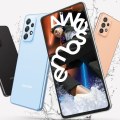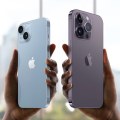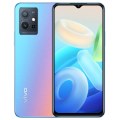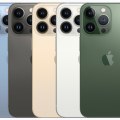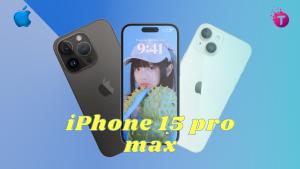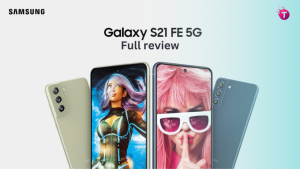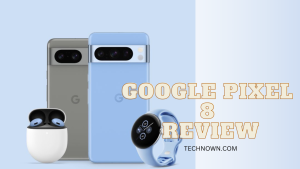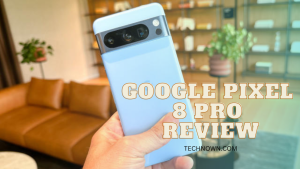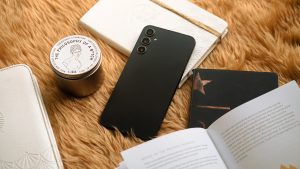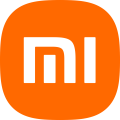Google Pixel XL
-
CPU: Quad-core (2x2.15 GHz Kryo & 2x1.6 GHz Kryo)
-
RAM: 4 GB RAM
-
Storage: 32GB / 128 GB
-
Display: AMOLED capacitive touchscreen, 16M Colors
-
Camera: 12.3 MP, f/2.0, EIS (gyro), phase detection & lase
-
OS: Android OS, v7.1
Introduction
In the ever-evolving world of smartphones, where every year brings new technological marvels. It’s easy to forget the pioneering devices that set the stage for the future. Google Pixel XL, launched in October 2016, was one such trailblazing smartphone. With its exceptional camera, pure Android experience and solid build. The Pixel XL has made an indelible mark on the Android ecosystem. Let’s take a trip down memory lane to realize the significance of this remarkable device.
Design and build quality
The Google Pixel XL boasted a design that was both elegant and practical. It features an aluminum unibody build, which not only looks premium but also feels durable. With three color options, including the eye-catching “Really Blue.” Google has paid attention to both style and substance. The rear fingerprint sensor placement was not only ergonomic but fast and accurate.
Stunning display
The Pixel XL’s 5.5-inch AMOLED display with a Quad HD resolution was a visual treat. It delivers sharp, vibrant colors, making it a joy to watch videos and browse the web. Deep blacks and high contrast levels set the phone apart in the display department.
Excellence in photography
One defining feature of the Google Pixel XL was its camera. Despite having an apparent 12.3-megapixel rear camera with an f/2.0 aperture, the phone delivered outstanding image quality. This is largely due to Google’s advanced image processing software, which produces crisp and stunning HDR+ photos in low-light conditions. SmartBurst, a feature that captures a burst of photos with a press of the shutter button, was another standout feature.
Pure Android experience
The Pixel XL runs pure Android and that was a major selling point. With no manufacturer bloatware or custom user interface to slow it down, the phone offered a clean and slick user experience. It gets prompt Android updates with major OS upgrades keeping it at the forefront of Android technology.
Impressive performance
Under the hood, the Google Pixel XL was powered by a Qualcomm Snapdragon 821 processor and 4GB of RAM. This hardware combination ensures smooth and responsive performance, handling multitasking and demanding apps with ease. Another notable addition was the introduction of Google Assistant with this phone, demonstrating Google’s commitment to AI and voice technology.
Battery life and fast charging
With a 3,450mAh battery, the Pixel XL offers respectable battery life, allowing users to easily get through a day of moderate to heavy usage. Additionally, fast charging via USB Type-C means recharging is a quick and hassle-free experience.
Audio quality
The device features stereo front-facing speakers, which contribute to an enhanced audio experience. This makes it an excellent choice for media consumption, be it watching videos, listening to music or playing games.
Conclusion
The Google Pixel XL was a groundbreaking device that laid the foundation for Google’s future smartphones. Its superb camera, clean Android experience and focus on prompt updates has earned it a dedicated following of users. Although it is no longer in production, its legacy lives on in subsequent Google Pixel models. The Pixel XL reminds us of the time when Google entered the premium smartphone market with a device that was all about simplicity, quality and exceptional photography. It’s a testament to the idea that a well-executed vision can have a lasting impact in the fast-paced world of technology.
Specs
General
| Device Type | Smartphone |
| Model | Pixel XL |
| Released | 23 October, 2024 |
| Status | Available |
| Price | 32999 |
Design
| Type <strong>Design Type</strong> called form factor refers to a mobile phone's size, shape, and style as well as the layout and position of major components of phone. There are three major form factors seen in mobile phones => bar phones, folding phones and sliding phones. | Bar |
| Dimensions | 154.7 x 75.7 x 8.5 mm (6.09 x 2.98 x 0.33 in) |
| Weight | 168 g (5.93 oz) |
| Colors | Quite Black, Very Silver, Really Blue |
Network
| 2G Network |
GSM 850 / 900 / 1800 / 1900 |
| 3G Network |
HSDPA 800 / 850 / 900 / 1700(AWS) / 1900 / 2100 |
| 4G Network |
LTE |
| SIM <strong>SIM</strong> (Subscriber Identity Module) is a small card that contains mobile network subscriber's account information. This allows the phone using the card to attach to a mobile network. The SIM card is most commonly associated with GSM and UMTS mobile networks. Moving a SIM card from one phone to another allows a subscriber to switch mobile phones without having to contact their mobile network carrier. SIM cards can also be used by a phone to store limited amounts of data, such as phone numbers and text messages. | Nano SIM |
| Dual SIM | Yes |
Display
| Display Type <strong>Display Technology => </strong> A number of display technologies and types used in mobile phones => TFT (Thin Film Transistor), IPS (In-Place Switching), OLED (Organic Light Emitting Diode), AMOLED (Active-Matrix Organic Light-Emitting Diode), Super AMOLED (an even advanced version of AMOLED), Resistive Touchscreen (Resistive touchscreens contain two layer of conductive material with a very small gap between them which acts as a resistance), Capacitive Touchsceen (Capacitive touchscreen technology consists of a layer of glass coated with a transparent conductor) | AMOLED capacitive touchscreen, 16M Colors |
| Size | 5.5 inches (~71.2% screen-to-body ratio) |
| Resolution | 1440 x 2560 pixels |
| Pixel Density <strong>Pixel Density (PPI)</strong> is refers to the concentration of pixels on a particular display, measured in pixels per inch (ppi). Pixel density is calculated by dividing the diagonal pixel resolution of a display by its diagonal size, higher pixel density better display quality. | 534 ppi pixel density |
| Touch Screen | Multitouch |
| Display Protection <strong>Display Protection => </strong> Gorilla Glass is a special alkali-aluminosilicate glass shield with exceptional damage resistance that helps protect mobile displays from scratches, drops, and bumps of everyday use, It is always better to go for a smartphone with Gorilla Glass for that added protection and peace of mind. | Corning Gorilla Glass 4 |
Media
| Audio Playback | Yes |
| Loudspeaker | Yes- 3.5mm Jack |
Camera
| Primary <strong>Camera</strong> is able to capture photographs and usually videos, The most important characteristics of a camera are the resolution (measured in megapixels), lens focus type (fixed or automatic), higher megapixel cameras are known to capture higher quality photos, but not always a good measurement of the photos quality. | 12.3 MP, f/2.0, EIS (gyro), phase detection & lase |
| Video | 2160p@30fps, 1080p@30/60/120fps, 720p@240fps |
| Flash <strong>Flash Light => </strong> There is commonly two types of flash lights are used in camera mobile phones, LED Flash (LED flash offers lower power consumption with drive circuitry that takes up very little room, LEDs can be strobed faster than any other light source), Xenon Flash (xenon flash produces an extremely intense full-spectrum white light for a very short duration) | Yes |
| Secondary | 8 MP, f/2.4, 1/3.2 |
Software
| Operating System <strong>OS => </strong> Every computer system run on a base software called Operating System (OS). Operating System controls all basic operations of the computer (such as smartphone, PDAs, tablet computers and other handheld devices). The Operating System allows the user to install and run third party applications (apps), apps are used to add new functionality to the device. | Android OS, v7.1 |
| Facebook <strong>Facebook</strong> is a popular free social networking website that allows registered users to create profiles, upload photos and video, send messages and keep in touch with friends, family and colleagues. The site is available in 37 different languages. | |
| Youtube <strong>Youtube</strong> is a popular free video-sharing website, Youtube is the largest video sharing site in the world, Millions of users around the world have created accounts on the site that allow them to upload videos that anyone can watch. |
Hardware
| Chipset <strong>Chipset</strong> is a group of integrated circuits designed to perform one or a more dedicated functions, often with real time computing constraints, Popular smartphones are equipped with more advanced embedded chipsets that can do many different tasks depending on their programming. | Qualcomm MSM8996 Snapdragon 821 |
| CPU <strong>CPU</strong> (Central Processing Unit) mostly known as processors, CPU processes instructions in order to carry out certain functions that make your device operate properly. Processors are often described as the brain of computers, smartphones and tablets, Smartphones and tablets rely on processors to carry out their every task, Processors are an incredibly important factor in selecting any type of computing device, including your smartphone. | Quad-core (2x2.15 GHz Kryo & 2x1.6 GHz Kryo) |
| GPU <strong>GPU</strong> (Graphics Processing Unit) is a single-chip processor designed to rapidly manipulate and alter memory to accelerate the creation of images in a frame buffer intended for output to a display, This includes things such as lighting effects, object transformations, and 3D motion. | Adreno 530 |
| RAM (Memory) <strong>RAM</strong> (Random Access Memory) is a type of computer memory that can be accessed randomly, any byte of memory can be accessed without touching the preceding bytes that allows information to be stored and accessed quickly from random locations. RAM is the most common type of memory found in computer systems, smartphones, tablets and other electronic devices. | 4 GB |
| Internal Storage <strong>Internal Storage</strong> is a data storage space (flash memory) mostly used in smartphones, tablets and other electronic devices where operating system, apps, music, photos, videos, files and other user data Is stored. | 32GB / 128 GB |
| Card Slot <strong>Memory Card Slot</strong> is a special slot for inserting a memory card. Memory cards allow you to expand the phone's built-in memory, A memory card (sometimes called a flash memory card or a storage card) is a small storage medium used to store data such as text, pictures, audio, and video, for use on small, portable or remote computing devices such as mobile phones, mp3 players, digital cameras. | No |
| Sensors <strong>Sensors</strong> are electronic components that detects and responds to some type of input from the physical environment. The specific input could be light, heat, motion, moisture, pressure and location, The output is generally a signal that is converted to use in computing systems, a location sensor, such as a GPS receiver is able to detect current location of your electronic device. |
Fingerprint (rear-mounted), accelerometer, gyro, proximity, compass, barometer |
Connectivity
| Bluetooth <strong>Bluetooth</strong> is a wireless communications technology for exchanging data between mobile phones, headsets, computers and other network devices over short distances without wires, Bluetooth technology was primarily designed to support simple wireless networking of personal consumer devices. | v4.2, A2DP, LE |
| Infrared <strong>Infrared</strong> connectivity is an old wireless technology used to connect two electronic devices. It uses a beam of infrared light to transmit information and so requires direct line of sight and operates only at close range. | |
| Wi-fi <strong>Wi-Fi</strong> is a popular wireless networking technology using radio waves to provide high-speed network connections that allows devices to communicate without cords or cables, Wi-Fi is increasingly becoming the preferred mode of internet connectivity all over the world. | Wi-Fi 802.11 a/b/g/n/ac, dual-band, Wi-Fi Direct, DLNA, Hotspot |
| Wi-fi Hotspot | |
| USB | v3.0, Type-C 1.0 reversible connector |
| GPS <strong>GPS</strong> The Global Positioning System is a satellite-based radio navigation system, GPS permits users to determine their position, velocity and the time 24 hours a day, in all weather, anywhere in the world, In order to locate your position, your device or GPS receiver must have a clear view of the sky. | Yes, with A-GPS |
| NFC <strong>NFC</strong> (Near field communication) is a set of standards for smartphones and similar devices to establish peer-to-peer radio communications with each other by touching them together or bringing them into proximity, usually no more than a few inches. | |
| HDMI <strong>HDMI</strong> (High-Definition Multimedia Interface) is a compact audio/video interface for transferring uncompressed video data and compressed or uncompressed digital audio data from a HDMI-compliant source device to a compatible computer monitor, video projector, digital television, or digital audio device. |
Data
| GPRS <strong>GPRS</strong> (General Packet Radio Service) is a packet oriented mobile data service on the 2G and 3G cellular communication system's global system for mobile communications (GSM), Generally, GPRS is used for the purpose of wireless data transfer, such as sharing pictures and videos or browsing the Internet via a mobile phone connection. | |
| EDGE <strong>EDGE</strong> (Enhanced Data GSM Environment) is a wireless network technology generally considered the next step in the 2G network offers data transfer rates up to four times faster than ordinary GSM networks, Generally, EDGE is used for the purpose of wireless data transfer, such as sharing pictures and videos or browsing the Internet via a mobile phone connection. | |
| Speed | HSPA, LTE-A |
Messaging
| SMS <strong>SMS</strong> (Short Messaging Service) is a text messaging service component of phone, Web, or mobile communication systems. It uses standardized communications protocols to allow mobile phone devices to exchange short text messages over the networks. | Yes |
| MMS <strong>MMS</strong> (Multimedia Messaging Service) is a standard way to send messages that include multimedia content (audio clips, video clips and images) to and from mobile phones over wireless networks using the WAP protocol. |
Battery
| Battery Type <strong>Battery Type => </strong> Cell phones run on various kinds of batteries depending on the manufacturer, phone size or shape and features. There are basically four types of cell phone batteries => Lithium Polymer, Lithium Ion, Nickel Metal Hydride and Nickel Cadmium. | Li-Ion (Lithium Ion) |
| Capacity <strong>Battery Capacity</strong> is a measure (typically in Amp-hr) of the charge stored by the battery, and is determined by the mass of active material contained in the battery. The battery capacity represents the maximum amount of energy that can be extracted from the battery under certain conditions. | 3450 mAh |
| Standby <strong>Standby Time</strong> is the total amount of time that you can leave your is fully charged, turned on and ready to send and receive calls or data transmissions before completely discharging the battery. | Up to 552 h (3G) |
| Talk Time <strong>Talk Time</strong> is the longest time that a single battery charge will last when you are constantly talking on the phone under perfect conditions, Ambient temperature and highly dependent on the cellular network environment such as the distance to the closest cell network tower. | Up to 32 h (3G) |
| Music Play | Up to 130 h |


